The Cuboctahedron
I have long been fascinated by the Cuboctahedron. It is visually unusual because of the
way it combines Triangular and Square symmetries, which we normally don't see appearing
together. This beauty indicates something deeper. As you see in this site, this polyhedron
just keeps re-appearing over and over.
As we've seen in our study of the polyhedra,
it is the rectification of two dual regular polyhedra, the Cube and Octahedron, so it has
the faces of both and as many vertices (12) as the edges of the Cube and the Octahedron.
Like all other rectifications or regular polyhedra, it has an equatorial polygon, in this
case the Hexagon. This implies that, like the Hexagon, it is radially equilateral. Among
the Platonic and Archimedean polyhedra, it is the only polyhedron with this
characteristic. The Cuboctahedron has four equatorial Hexagons located halfway between two
opposite Triangular faces, each has 1/2 of its vertices (the opposite faces account for
the remaining vertices) and 1/4 of its edges.
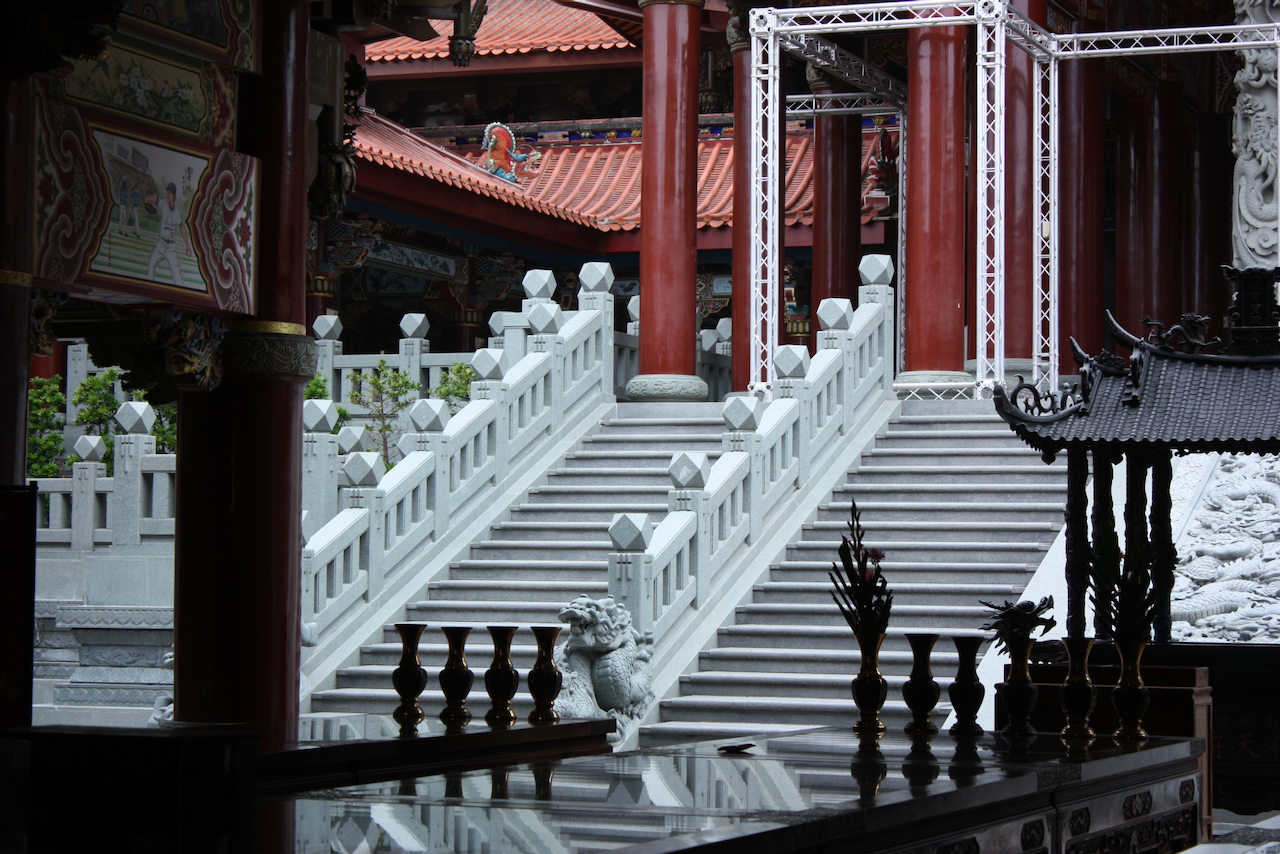
Fig. D.1: Cuboctahedra.
As we've seen our study of the regular convex
polychora, it is, like my favourite polychoron (the 24-cell) a rectification of a
cross polytope. However, it is also the equatorial polyhedron of the 24-cell, which
implies that the latter is also radially equilateral. Of all convex regular polytopes,
only the Hexagon, Tesseract and 24-cell have this property. The 24-cell has 12 equatorial
Cuboctahedra (as many as the vertices of the Cuboctahedron, and as many Cuboctahedra as
flank the flight of stairs on the left in Figs. D.1 and D.2) located halfway between pairs
of opposite Octahedra, each Cuboctahedron has 1/2 of its vertices (the opposite cells
account for the remaining vertices), 1/4 of its edges and 1/12 of its Triangular faces.
These proportions are very similar to the relation between the Hexagon and Cuboctahedron.
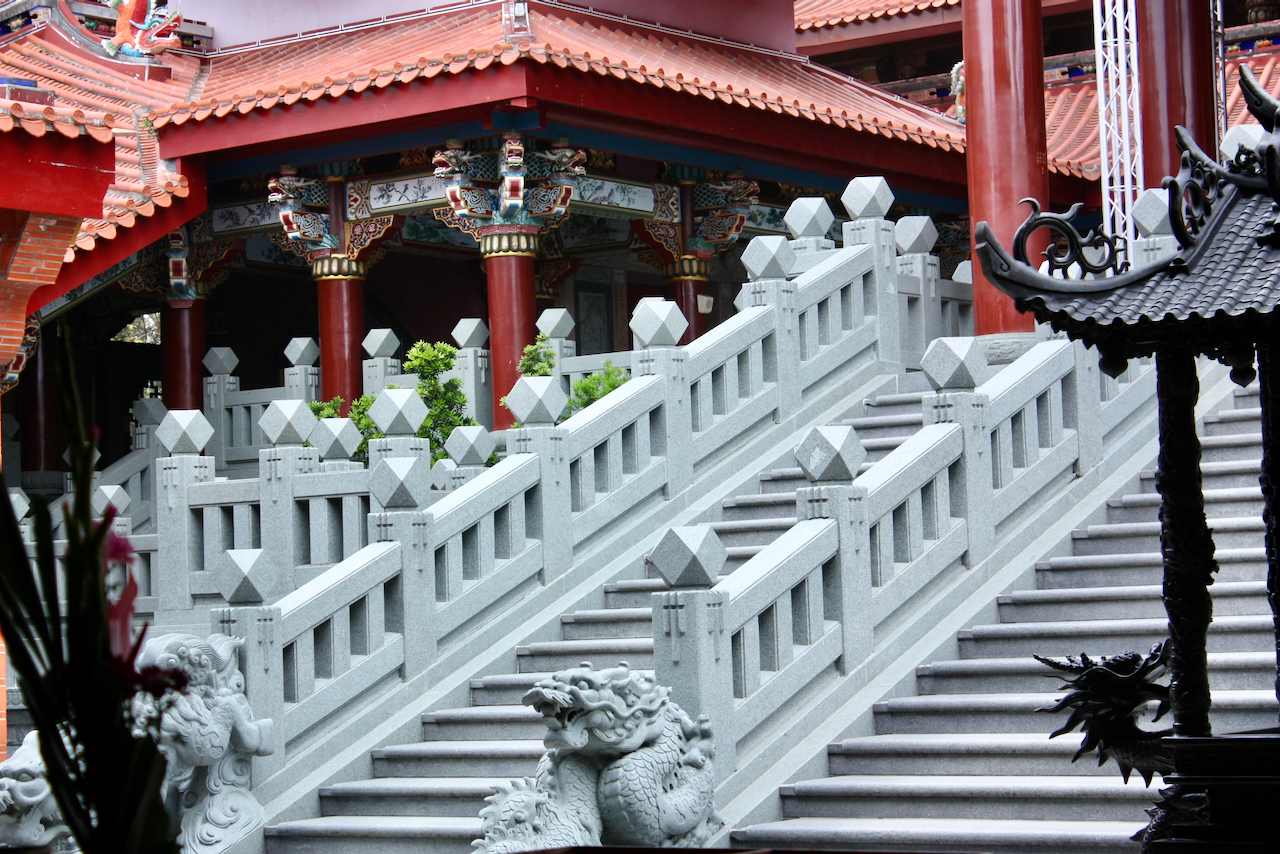
Fig. D.2: Cuboctahedra.
We have also seen in that page that the Cuboctahedron also generates my favourite Platonic
solid, the Icosahedron, by adding diagonals to its Squares and then enforcing equal length
to all edges. This is possible because of the unusual non-rigid kinematics of the
cuboctahedron. Furthermore, as we've also seen in our study of the regular convex polychora, this transformation is an important
step in the derivation of my second-favourite regular polychoron (the 600-cell) from
the 24-cell (Gosset's construction).
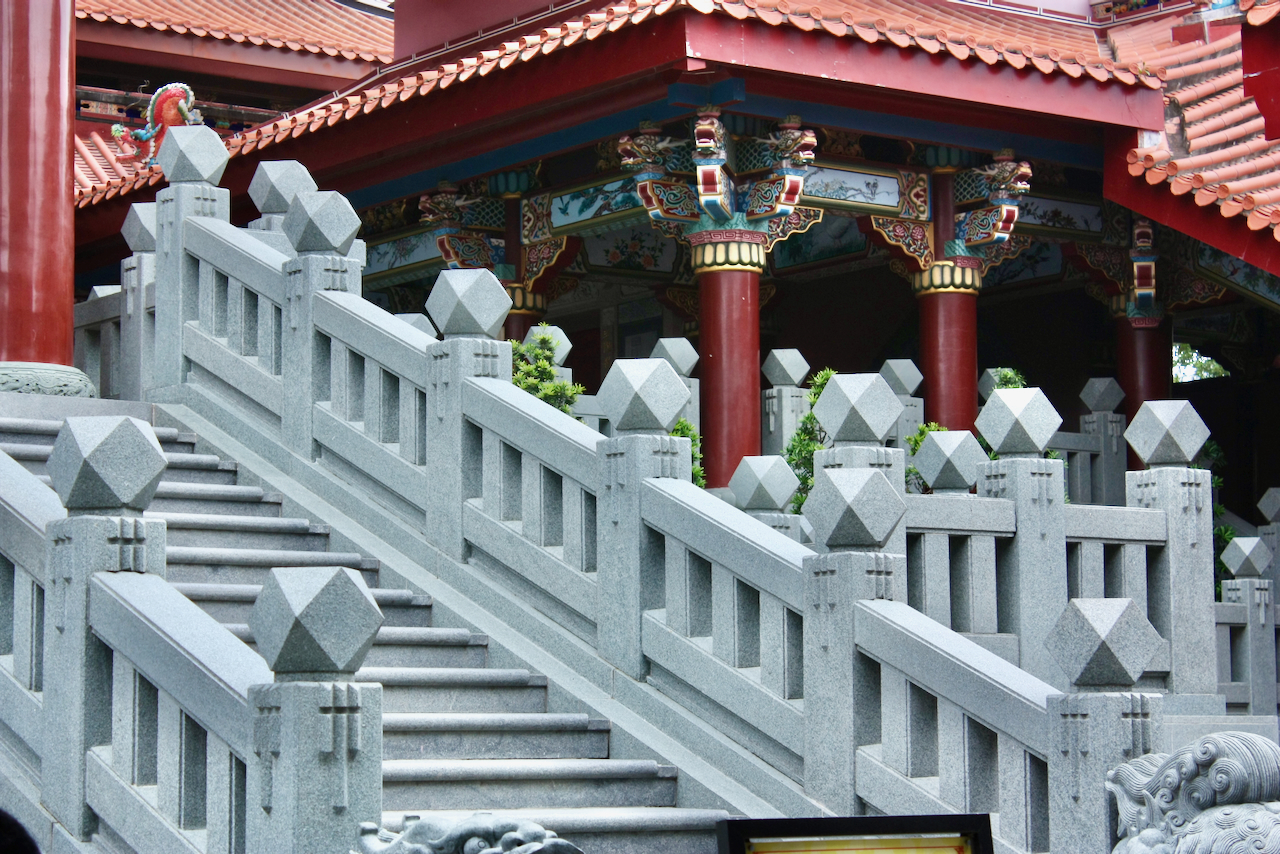
Fig. D.3: Cuboctahedra.
As we've seen our study of the star
polychora, a Cuboctahedral configuration can be used to describe the geometric
relations between the 12 regular polychora with the symmetry of the 600-cell. This happens
because the Cuboctahedron has 12 vertices in a highly symmetric arrangement, but also
because some equatorial Hexagons can describe the relations between the Icosahedral
regular polyhedra.
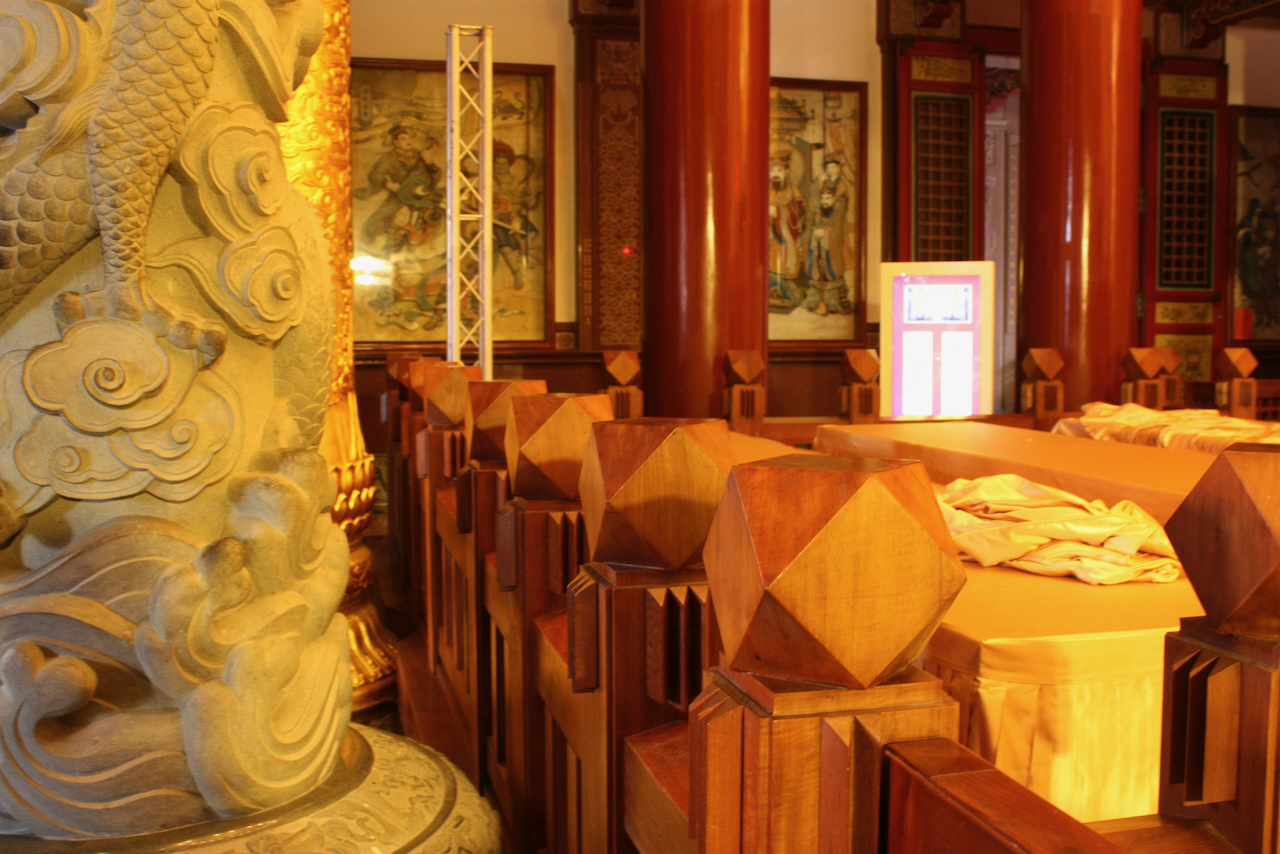
Fig. D.4: Cuboctahedra.
This feature of the Cuboctahedron might be related to its sphere packing
properties. In one of the two most compact configurations of equal-sized spheres, the face
centred cubic (FCC) lattice, the centres of the spheres surrounding each sphere have the
same arrangement as the vertices of the Cuboctahedron. In the second such configuration,
the Hexagonal close-packed (HCP) packing, linking the centres of the spheres surrounding
each sphere we obtain the triangular
orthobicupola, one of the Johnson solids. This can be built
by dividing the Cuboctahedron in two along one of its equatorial Hexagons and rotating one
half by 60 degrees.
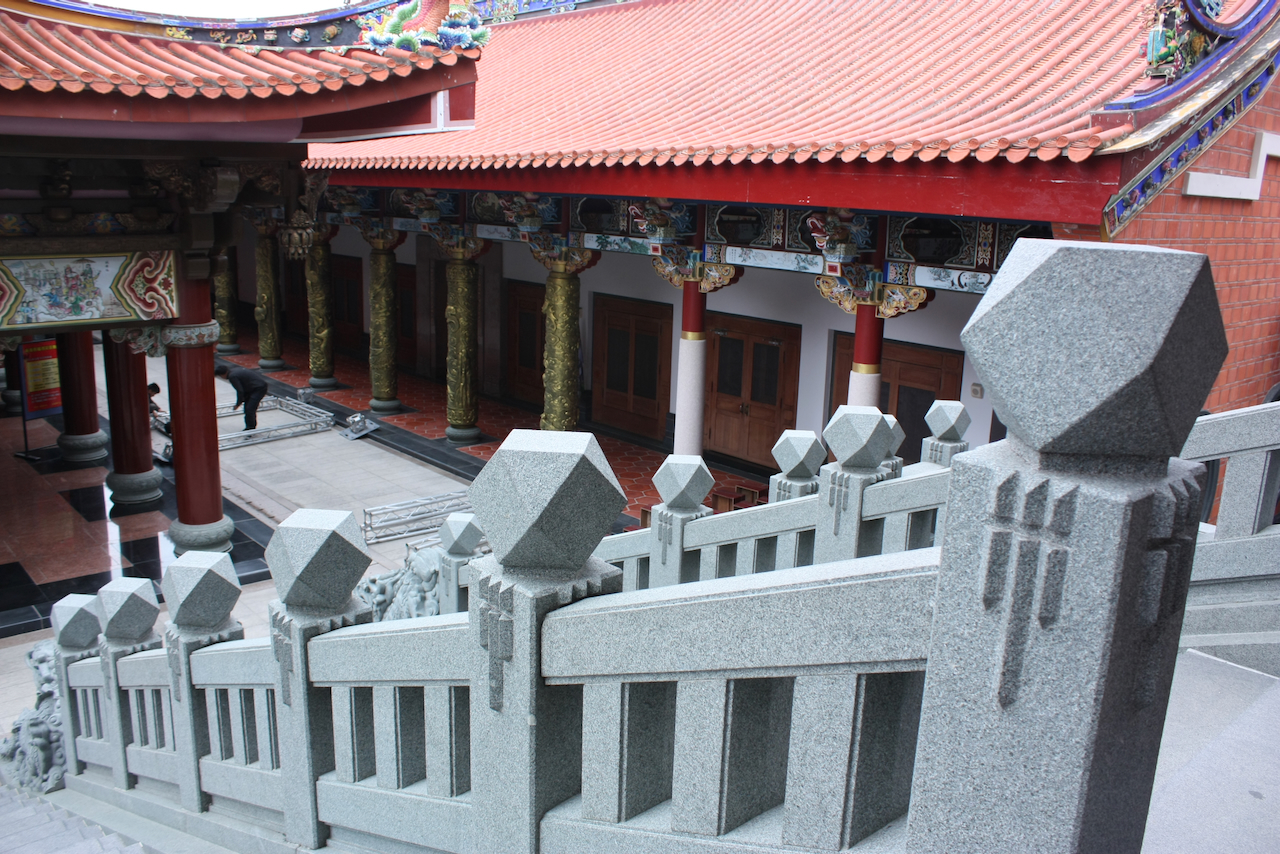
Fig. D.5: Cuboctahedra.
I don't know the reason why so many Cuboctahedra appear in this temple (Nankunshen) near Tainan, in
Taiwan. They certainlly suit the quiet, meditative atmosphere of the place. But it is not
just that. I guess someone felt, like I do, that this apparently simple shape is unusually
interesting, full of hidden secrets, an inhabitant of a quiet, unchanging world beyond our
daily experience. Certainly something suitable for a temple!
Paulo's polytope site.





